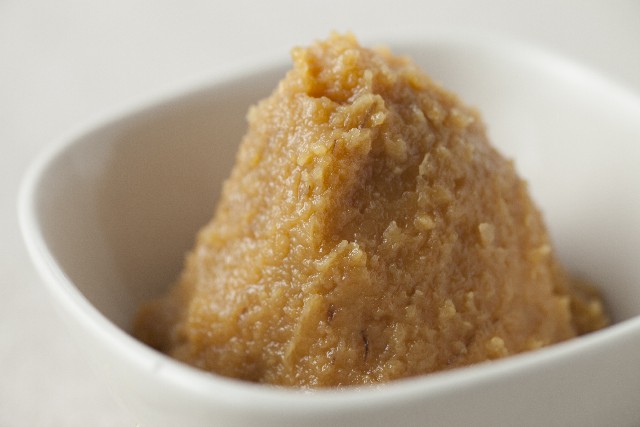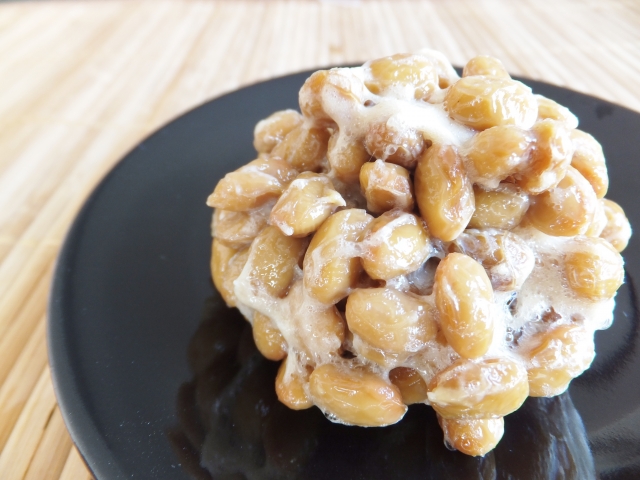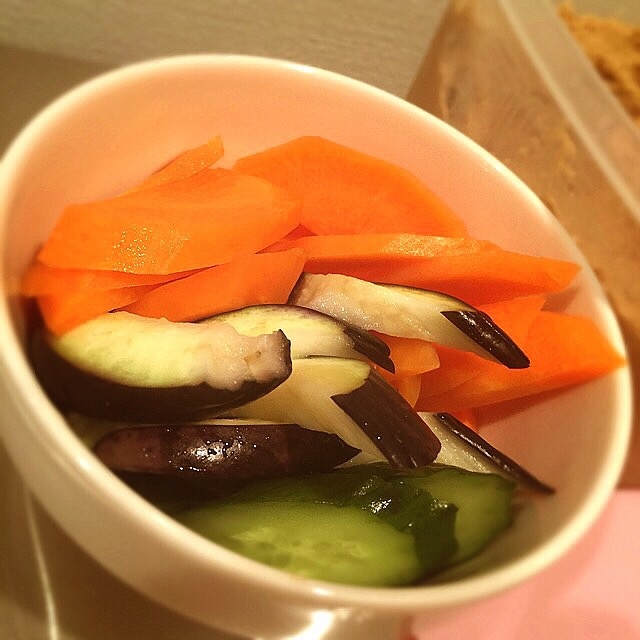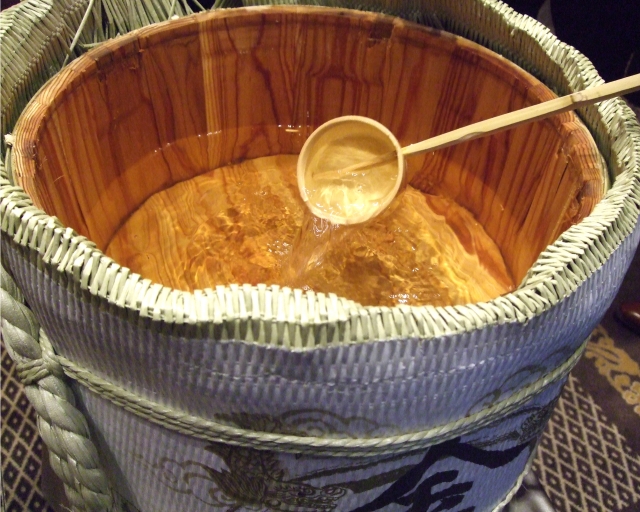In the old days, when there were no refrigerators available, people used their best knowledge to preserve food. Every culture has their own way of preserving their food, which is usually passed down from one generation to the next.
Fermentation is deep in the roots of the Japanese food culture. The world famous and yet very basic seasoning we use is soy sauce. Did you know that soy sauce is also a product of fermentation? As the name states, it is a sauce brewed from slowly fermented soy beans. Ingredients to create soy sauce are soy beans, wheat, water and salt. With the help of enzymes and koji bacteria (Aspergillus Oryzae) generated by carbohydrates of roasted wheat and soy beans, the soybeans continue its fermentation. After a long and patient process, soy sauce is squeezed out and bottled for consumption.
The other basic seasoning of Japanese cuisine is soy bean paste which is called Miso, also a product of fermented soybeans. There are three basic miso pastes which are regionally oriented. Koji bacteria cultured in rice, wheat or beans make the regional differences, and their local dishes using miso paste clearly show the difference in flavors.

Addition to these two key seasonings in Japanese cuisine, there is a third fermented player: Katsuo bushi, or dried smoked bonitos. Technically, it would be smoked and fermented bonito. There are five basic tastes that we sense: sweetness, sourness, saltiness, bitterness, and umami. Smoked bonito flakes are often used as condiments in Japanese cuisine to add a taste called UMAMI which is a certain savory flavor. As well as soy sauce and miso paste, smoked bonito is rich in umami taste. Umami, which is a Japanese word for the savory flavor can also be tasted in cured ham, cheese, ketchup and so on.
Now, let’s see what else we can find that is fermented in Japanese food.

Natto, which most non-Japanese people tend to dislike, is steamed soybeans fermented with Natto bacteria. This bacterium processes the beans to add umami and a unique sticky texture to the beans. Beans turn brown and they look and sometimes smell like they are rotten. Technically they are. Natto is often served as part of a Japanese breakfast as a topping for steamed rice. Natto use to be more popular in north east of Japan, but not in south west. It has mainly to do with the colder climate which was crucial in making Natto. The temperature needed to drop in order to stop the fermentation. It is now widely sold all over Japan, but to this date, it is still more popular in eastern Japan. Over the years, it has been creatively used in other dishes such as pasta, toasts and more, collaborating with other food cultures.
Vegetables are commonly pickled worldwide, and Japan is no exception. Pickles have strongly localized characteristics, and it is difficult to generalize. Among all the variation, however, I would like to introduce a traditional pickling method called “Nuka-zuke”. Powdered outer bran layer of whole grain rice which is produced when milling brown rice grains is called “Nuka”. With water, salt and vegetables and with the help of yeast, nuka gradually ferments and brings out a unique flavor, aroma and acidity perfect for pickling. Due to the daily tending Nuka-zuke requires, we often say that we enrich and raise the Nuka-pot for pickling. Every family used to have their own nuka pot with their own family recipe to make their pickles, but unfortunately it is not so common anymore.


Lastly, I would like to introduce you Japanese sake. Like most alcoholic beverages, Japanese sake is also a product of fermentation. Rice is fermented by rice koji bacteria and produces glucose. Glucose turns to alcohol and that is Sake. Ingredients cannot be simpler: rice and water and koji. The difference in brand of rice, water, temperature and region enables local Sake breweries to create their own unique flavors and characteristics in sake. Let me also mention that nothing goes to waste when making Sake. After the fermented rice is filtered and fermented rice remnants are left. This is called Sake-kasu which is rich with umami and nutrition. The Japanese have found ways to use Sake-kasu in many dishes, from pickling fish or meat to using them to make sweets.
Fermentation and Japanese cuisine are inseparable. Recent studies have revealed the health factors in fermented food, but we have naturally taken them in in our daily diet. This may be one of the reasons why Washoku, or Japanese food is generally considered one of the most healthy food in the world.
